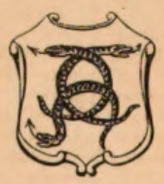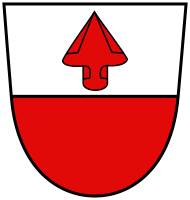
From Encyclopedia of Heraldry by John Burke and John Bernard Burke (1844)
“Founder of the XIV. Noble Tribe. Quarterly, first and fourth, gu. a lion ramp. or; second and third, az. betw. three nags’ heads erased ar. a fesse or.”
Obviously, the illustration only shows the first quarter of the arms, for some unfathomable reason. (Pity; I kind of wanted to see the artist’s interpretation of three nags’ heads.) Assuming that he existed – which is always an assumption with the “Noble Tribes” – poor Eunydd’s genealogy is hopelessly mangled. One eighteenth-century source has him as the son of “Gwenllian,” although both of the most famous Gwenllians in Welsh history had, respectively, no children, and no sons named Eunydd. The nags’ heads allegedly come from his mother via her father, Rhys ap Marchen, which is completely unverifiable. It’s possible this Eunydd is intended to be one Eunydd ap Gwerngwy ap Gwrgeneu, who would have lived around 1165 or 1170, or potentially a conflation of multiple people with the same first name.









